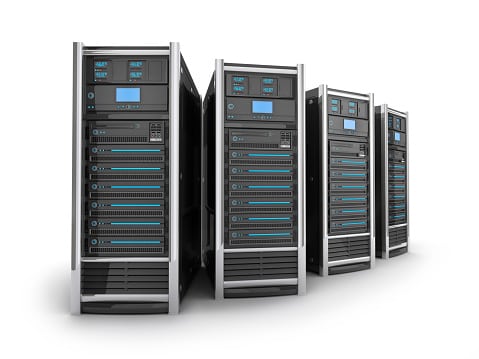Server hardware is the backbone of all that you do in your business. With the appropriate hardware, your company can remain competitive in a world dominated by tech. Needs such as connected devices, analytics-driven processes, and social media marketing are reliant on well-functioning server hardware and devices. Without these things, it can be difficult to stay current in an ever-changing market.

There are four immediate reasons to replace your old server hardware.
You should replace your server if:
There are other reasons why you should replace your out-of-date or non-functioning server hardware, including:
When you are considering replacing your server hardware, it is worth considering online servers over local servers. You must maintain local servers. They require storage room, in-house IT support, and when something goes wrong, you must wait an undetermined amount of time for the issues to clear up.
Consider switching to the Cloud, which provides similar functions to a physical server, while offering some upgrades as well. With Cloud-based server’s, businesses can access resources online within minutes and will have the required tools for auto-scaling, auto-provisioning, and auto-management through the community-driven open development API.
There is also the option of running both Cloud servers and physical servers simultaneously. Running both types of servers may be the best option when considering a shift in server hardware. By working with Cloud and physical servers all server needs can be met. Cloud servers provide the ease and reliability of use, while dedicated servers are more secure and allow users to address stringent security and compliance needs.
You need the ability to use the cloud for applications where it’s best suited, and run dedicated hardware where needs require.
Cloud also offers the option of private or public servers. Private servers are better for business-critical operations, and public Cloud servers are best for non-sensitive operations.
Alternatively, you may consider replacing your current server hardware with the newest Windows 2016 server. This system s is an entirely new generation of operating systems and offers features that were previously not seen. If you are considering moving to the Cloud, but find that it seems complicated or does not fit your business’s needs, Windows 2016 may be the answer. Windows 2016 is designed to work with any infrastructure that is currently in place, making the transition seamless.
Replacing old or non-working servers with the newer Windows server gives companies the option of doing more with their server. They will have the standard server functions and implement key security applications. Windows 2016 can also improve efficiency by blending physical and virtual infrastructures through software defines technologies.
Replacing your server might seem like it will be more effort than it is worth. However, when you are struggling with issues such as instability or storage issues, replacing your old server is the best option. Newer servers offer more usability and better functioning systems that are essential for keeping the standards of a company.
To learn if it’s time for you to replace your server hardware, or for more information about what server will work best for your needs, contact your local IT professionals.
Call our business managed IT services department directly at (404) 777-0147 or simply fill out this form and we will get in touch with you to set up a getting-to-know-you introductory phone call.
Fill in our quick form
We'll schedule an introductory phone call
We'll take the time to listen and plan the next steps
11285 Elkins Rd Suite E1, Roswell, GA 30076
© Copyright 2024 Centerpoint IT. All Rights Reserved. Website in partnership with Tech Pro Marketing. | Privacy Policy
Get Immediate Help For All Your Technology Issues (404) 777-0147

If you want our team at Centerpoint IT to help you with all or any part of your business IT, cybersecurity, or telephone services, just book a call.
Fill in your information below to get started today.
"*" indicates required fields
Fill in your information below to schedule now.
"*" indicates required fields
Before your organization commits to 1, 2, 3 or even longer managed IT services contract, understand what you’re getting. Centerpoint IT gives you the facts in our Managed IT Services Buyer’s Guide.
Enter your information below and we’ll send it over.
"*" indicates required fields

We are turning 15 and want to celebrate this milestone with you because without you this would not have been possible. Throughout this year look for special promotions on services and tools aimed at Making IT Simple for You so you can focus on your business.

We are turning 15 and want to celebrate this milestone with you because without you this would not have been possible. Throughout this year look for special promotions on services and tools aimed at Making IT Simple for You so you can focus on your business.
https://calendly.com/centerpoint-it/discovery-call